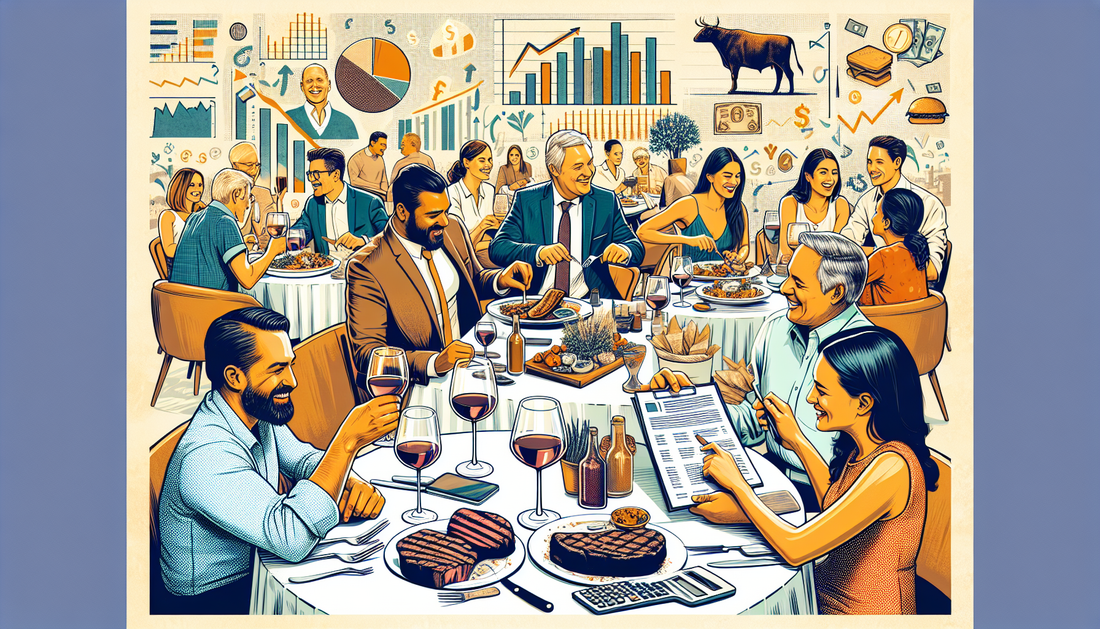
Navigating Consumer Finance Amid Inflation and Interest Rate Changes
WonderLust3.6 RecipesShare
As inflation and interest rates continue to fluctuate, consumers are feeling the impacts on their finances. This has prompted a shift in spending habits and financial strategies across the nation. Experts emphasize the importance of navigating these changes smartly to safeguard personal finances.
- Inflation rates have surged to 6.2% annually as of October 2023, prompting concerns for households.
- The Federal Reserve has raised interest rates multiple times since early 2022, currently standing at a range of 4.5% to 4.75%.
- Record-high prices for groceries and gas are affecting budgets, causing consumers to prioritize essential purchases.
- Many individuals are turning to debt consolidation to manage rising costs, with personal loans becoming increasingly popular by year-end 2023.
- Financial literacy and budgeting workshops are gaining traction across cities like New York and Los Angeles, helping consumers make informed choices.
Staying informed and adaptive is crucial as financial landscapes evolve, ensuring consumers can withstand economic pressures.
The landscape of consumer finance continues to evolve, particularly as inflation remains a persistent concern across the United Kingdom. With rising costs and economic pressures, many sectors feel the impact, including dining establishments and housing markets. This blog post reviews the latest developments in personal finance, looking at interest rate changes, mortgage trends, and the implications for consumers.
Recent Changes in Interest Rates
As of October 2023, the Bank of England maintained its position, keeping interest rates steady following a series of increases throughout the year. Analysts predict that these rates, currently at 5.25%, may decline gradually in response to changing economic conditions. This decision follows several hikes aimed at curbing inflation, which has been a concern since 2021. On September 28, the Monetary Policy Committee opted against further increases, signaling a possible shift in the financial environment.
The decision to hold rates steady was influenced by various factors, including recent economic data indicating reduced inflationary pressures. Economists at leading institutions are beginning to forecast a potential dip in rates by mid-2024, suggesting relief for consumers burdened by historically high costs.
Impact on Mortgage Holders
The mortgage market has been particularly affected by the fluctuations in interest rates. Homeowners with variable-rate mortgages feel the strain, as their costs have increased significantly this past year. As of October 2023, the average interest rate for new fixed-rate mortgages reached 6.22%, marking a sharp increase from previous years. Consumers are beginning to reconsider their options as affordability becomes paramount.
Data from various financial institutions shows that many homeowners are opting for fixed-rate products, seeking to lock in rates before any further increases occur. The transition towards fixed-rate mortgages reflects the desire for stability amid uncertain economic fluctuations. However, the competition among lenders for buyers' attention means some banks and building societies are offering attractive deals, which could soften the blow of rising rates.
Consumer Response to Food Inflation
The restaurant industry has also navigated challenging waters, grappling with high food inflation. Reports suggest that prices at eateries surged by 8.4% year-on-year, adding further strain on household budgets. Favorite dining options, once considered affordable treats, are now viewed as luxuries by many families.
As dining costs rise, a number of restaurants are adapting to the new landscape. Some establishments have shifted their focus to offer value-oriented deals as a response to changing consumer preferences. Discounts and meal packages are now common, enticing customers who are more budget-conscious. Notably, chains such as Pret a Manger and Greggs have announced significant discounts to attract patrons amid these rising costs.
Future Prospects for Consumers
Looking ahead, consumers remain hopeful that economic adjustments will lead to more favorable conditions. The Bank of England's stance and easing inflation predictions offer a glimmer of optimism. Financial experts suggest that if inflation continues its downward trend, interest rates could see reductions by the end of 2024.
Consumers are encouraged to explore various financial products. The housing sector, while undergoing changes, remains vibrant with options. Lenders are continuously updating their mortgage offerings, and the competition fuels innovation. As a result, a plethora of choices exists for both new and existing homeowners.
Strategies for Managing Finances
As economic conditions fluctuate, effective financial management remains crucial. Individuals are urged to reassess their personal finance strategies. Reviewing budgets, minimizing discretionary spending, and exploring refinancing options for loans and mortgages are key steps for many. Creating a sustainable spending plan can mitigate some of the pressures of rising costs.
Financial institutions are also stepping up, offering more advisory services to help consumers navigate these turbulent waters. Regular consultations can provide updated insights into managing finances in unprecedented times. Having the right information becomes an asset amid economic uncertainty.
The Role of Economic Indicators
Various economic indicators will continue to play a significant role in shaping consumer behavior. Factors such as employment rates, wage growth, and inflation data are critical metrics for forecasting economic conditions. As these elements evolve, they will drive trends in spending, investment, and saving among households.
All eyes remain on the Bank of England for potential policy shifts affecting these variables. The relationship between interested parties, such as consumers, lenders, and policymakers, continues to evolve as the economy changes.
Conclusion: Navigating a Changing Landscape
In summary, the current climate of consumer finance is influenced by several key factors, including rising interest rates and inflation. As financial pressures mount, consumers must adapt and explore available options. Lenders and restaurants are responding to the changes, offering discounts and competitive products to retain their markets.
Looking to the future, there is hope for a more stable economic landscape as indicators improve. Staying informed and proactive will empower consumers to make decisions that best align with their financial goals. In uncertain times, knowledge is indeed the best strategy for navigating the evolving world of personal finance.











